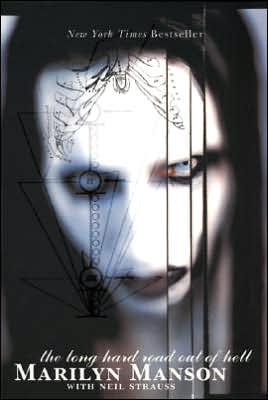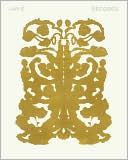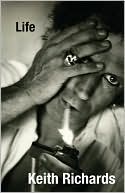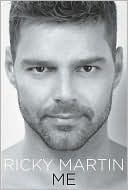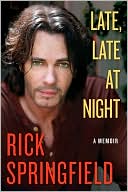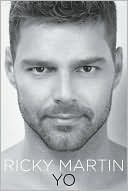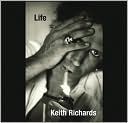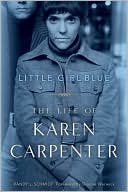Long Hard Road Out of Hell
The best-selling autobiography of America’s most controversial celebrity icon, Marilyn Manson (with a bonus chapter not in the hardcover).\ In his twenty-nine years, rock idol Manson has experienced more than most people have (or would want to) in a lifetime. Now, in his shocking and candid memoir, he takes readers from backstage to gaol cells, from recording studios to emergency rooms, from the pit of despair to the top of the charts, and recounts his metamorphosis from a frightened...
Search in google:
Shock rocker Marilyn Manson has emerged as one of today's most controversial celebrity icons. Now readers can venture beyond the image to the true story of Brian Warner, aka Marilyn Manson, and find out about his relentless crusade as the self-proclaimed "Antichrist Superstar." The Austin Chronicle A terrific rock & roll saga in the epic vein.
Hell to me was my grandfather's cellar. It stank like a public toilet, and was just as filthy. The dank concrete floor was littered with empty beer cans and everything was coated with a film of grease that probably hadn't been wiped since my father was a boy. Accessible only by rickety wooden stairs fixed to a rough stone wall, the cellar was off-limits to everybody except my grand-father. This was his world. \ Dangling unconcealed from the wall was a faded red enema bag, a sign of the misplaced confidence Jack Angus Warner had in the fact that even his grandchildren would not dare to trespass. To its right was a warped white medicine cabinet, inside of which were a dozen old boxes of generic, mail-order condoms on the verge of disintegration; a full, rusted can of feminine-deodorant spray; a handful of the latex finger cots that doctors use for rectal exams; and a Friar Tuck toy that popped a boner when its head was pushed in. Behind the stairs was a shelf with about ten paint cans which, I later discovered, were each filled with twenty 16-millimeter porno films. Crowning it all was a small square window—it looked like stained glass, but it was actually stained with a gray grime—and gazing through it really felt like looking up out of the blackness of hell.\ What intrigued me most in the cellar was the workbench. It was old and crudely made, as if it had been constructed centuries ago. It was covered with dark orange shag carpeting that looked like the hair on a Raggedy Ann doll, except it had been soiled from years of having dirty tools laid on it. A drawer had been awkwardly built into the bench, but it was always locked. On the rafters above was a cheap full-lengthmirror, the kind with a wooden frame meant to be nailed to the door. But it was nailed to the ceiling for whatever reason—I could only imagine why. This was where my cousin, Chad, and I began our daily and progressively more daring intrusions into my grandfather's secret life.\ I was a scrawny thirteen year old with freckles and a bowl cut courtesy of my mother's shears; he was a scrawny twelve year old with freckles and buck teeth. We wanted nothing more than to become detectives, spies or private investigators when we grew up. It was in trying to develop the requisite skills in stealth that we were first exposed to all this iniquity. \ At first, all we wanted to do was sneak downstairs and spy on Grandfather without him knowing. But once we started discovering everything that was hidden there, our motives changed. Our after-school forays into the cellar became half teenage boys wanting to find pornography to jerk off to and half a morbid fascination with our grandfather.\ Nearly every day we made new and grotesque discoveries. I wasn't very tall, but if I balanced carefully on my grandfather's wooden chair I could reach into the space between the mirror and the ceiling. There I found a stack of black and white bestiality pictures. They weren't from magazines: just individually numbered photographs that looked like they had been handpicked from a mail-order catalog. There were early-seventies photos of women straddling giant horse dicks and sucking pigs' dicks, which looked like soft, fleshy corkscrews. I had seen Playboy and Penthouse before, but these photographs were in another class altogether. It wasn't just that they were obscene. They were surreal—all the women were beaming real innocent flower-child smiles as they sucked and fucked these animals.\ There were also fetish magazines like Watersports and Black Beauty stashed behind the mirror. Instead of stealing a whole magazine, we would take a razor blade and carefully cut out certain pages. Then we'd fold them into tiny squares and hide them underneath the large white rocks that framed my grandmother's gravel driveway. Years later, we went back to find them, and they were still there—but frayed, deteriorated and covered with earthworms and slugs.\ One afternoon in the fall as Chad and I sat around my grandmother's dining room table after a particularly uneventful day at school, we resolved to find out what was inside the locked workbench drawer. Always hell-bent on stuffing her brood with food, my grandmother, Beatrice, was force-feeding us meat loaf and Jell-O, which was mostly water. She came from a rich family and had tons of money in the bank, but she was so cheap that she'd try to make a single Jell-O package last for months. She used to wear knee-high hose rolled down around her ankles and odd gray wigs that obviously didn't fit. People always told me I resembled her because we were both skinny with the same narrow facial structure. \ Nothing in the kitchen had changed as long as I'd been eating her inedible food there. Above the table hung a yellowing picture of the pope in a cheap brass frame. An imposing-looking family tree tracing the Warners back to Poland and Germany, where they were called the Wanamakers, was plastered on the wall nearby. And crowning it all was a large, hollow, wooden crucifix with a gold Jesus on top, a dead palm leaf wrapped around it and a sliding top that concealed a candle and a vial of holy water.\ Under the kitchen table, there was a heating vent that led to the workbench in the cellar. Through it, we could hear my grandfather coughing and hacking down there. He had his CB radio on, but he never talked into it. He just listened. He had been hospitalized with throat cancer when I was very young and, for as long as I could remember, I never heard his actual voice, just the jagged wheezing that he forced through his tracheostomy. \ We waited until we heard him leave the cellar, abandoned our meat loaf, poured our Jell-O into the heating vent and ventured downstairs. We could hear our grandmother calling futilely after us: "Chad! Brian! Clean the rest of your plates!" We were lucky all she did was yell that afternoon. Typically, if she caught us stealing food, talking back or goofing off, we were forced to kneel on a broomstick in the kitchen for anywhere from fifteen minutes to an hour, which resulted in perpetually bruised and scabbed knees.\ Chad and I worked quickly and quietly. We knew what had to be done. Picking a rusted screwdriver off the floor, we pried the workbench drawer open wide enough so we could peek in. The first thing we saw was cellophane: tons of it, wound around something. We couldn't make out what it was. Chad pushed the screwdriver deeper into the drawer. There was hair and lace. He wedged the screwdriver further, and I pulled until the drawer gave way.
\ From Barnes & NobleThe Barnes & Noble Review\ His Story Told His Way\ He is hated, worshiped, and feared. His music has been the subject of public protests, boycotts, and bans. He has been arrested and even made the subject of a U.S. Senate subcommittee hearing. He is Brian Warner, aka Marilyn Manson, one of the biggest — and most controversial — stars in rock music today. In his autobiography, The Long Hard Road Out of Hell, Manson recounts his life story, details his controversial philosophies, and protests that he is reviled for all the wrong reasons.\ Just as Manson's career differs from that of the average rock 'n' roller, so does The Long Hard Road stand apart from the typical "my life with the band" memoir. Instead, it is a raw, unflinching account of Manson's metamorphosis from a frustrated, forward-thinking Christian schoolboy to his current self-proclaimed status of Anti-Christ Superstar. Be forewarned: Manson's tale, rife with sex, drugs, rock 'n' roll, and violence, is not for the squeamish, but it is a fascinating account of his struggle to be heard in a society he perceives as being unforgivably complacent.\ Manson grew up in Ohio and attended a fundamentalist Christian school through the beginning of his tenth-grade year. This constraining, rigid environment fostered his earliest acts of rebellion; even as a teenager, he was able to intellectualize the absurdity of the school's practices: "If our hair touched our ears, it had to be cut. Everything was regimented and ritualistic, and no one was allowed to stand out as better than or different from anyone else.Itwasn't very useful preparation for the real world: turning all these graduates loose every year with the expectation that life will be fair and everyone will be treated equally." Manson's home life was no relief: His father was an abusive Vietnam veteran and his mother, in Manson's view, wanted nothing more than to perpetuate her son's dependence on her.\ Fortunately for Manson, he was irrepressibly creative, and in a chapter entitled "The Road to Hell is Paved with Good Rejection Letters," he shares samples of his earliest efforts at short stories and poetry, none of which were accepted for publication. He eventually managed a fledgling career as a music journalist but remained frustrated: "The problem wasn't the magazines or my writing, but the musicians themselves. Each successive interview I did, the more disillusioned I became. Nobody had anything to say. I felt like I should be answering the questions instead of asking them. I wanted to be on the other side of the pen." Manson's rapid ascension from music writer to fame-bound musician is illustrated by his recollection of conducting an interview with industrial music-master Trent Reznor (of Nine Inch Nails): "The next time Reznor came to town," Manson writes, "I was his opening act."\ Manson's road to fame was paved with bad relationships, drug abuse, run-ins with the police, dangerously extreme backstage behavior, infighting among his bandmates, and the struggle to find and maintain his personal and artistic integrity within the music industry. Particularly memorable is his account of his meetings with Anton LaVey, the controversial founder of the Church of Satan (one of Manson's many stops along the path to finding his own moral and philosophical code). Manson often comes across as arrogant, and perhaps never more so than when he explains his identification with LaVey: "In a way, [LaVey's] kind of intellectual elitism (and mine) is actually politically correct because it doesn't judge people by race or creed but by the attainable, equal opportunity criterion of intelligence."\ As one reads this frank and absorbing book, which also features Manson's personal photographs, excerpts from his tour journal, and examples of the propaganda spread by those who would silence him, one senses a genuine thoughtfulness on the part of its author, a yearning for self-understanding and growth. He spares no detail, no matter how unflattering, of his journey, and reveals himself as both egotistical and self-loathing, brilliant and foolish.\ Alternately enlightening and disturbing, The Long Hard Road Out of Hell is, at its heart, a coming-of-age story. As Manson tells it, journalists, fans, and critics persistently ask him if his persona is an act or if it is genuine; this autobiography provides an opportunity for us to answer that question for ourselves.\ — Jamie Weisman\ \ \ \ \ \ Chicago Sun-TimesWell-written and uncommonly addictive.\ \ \ Rolling StoneMarilyn Manson unleashes the ultimate tell-all.\ \ \ \ \ Publisher's WeeklySuperstore Superstar... one of the best-selling music biography titles ever sold, hands down.... This book is a really good example that popular culture is everywhere — even in the suburbs and smaller bedroom communities... the booksellers who understand that stand to gain a lot.\ \ \ \ \ The Austin ChronicleA terrific rock & roll saga in the epic vein.\ \
